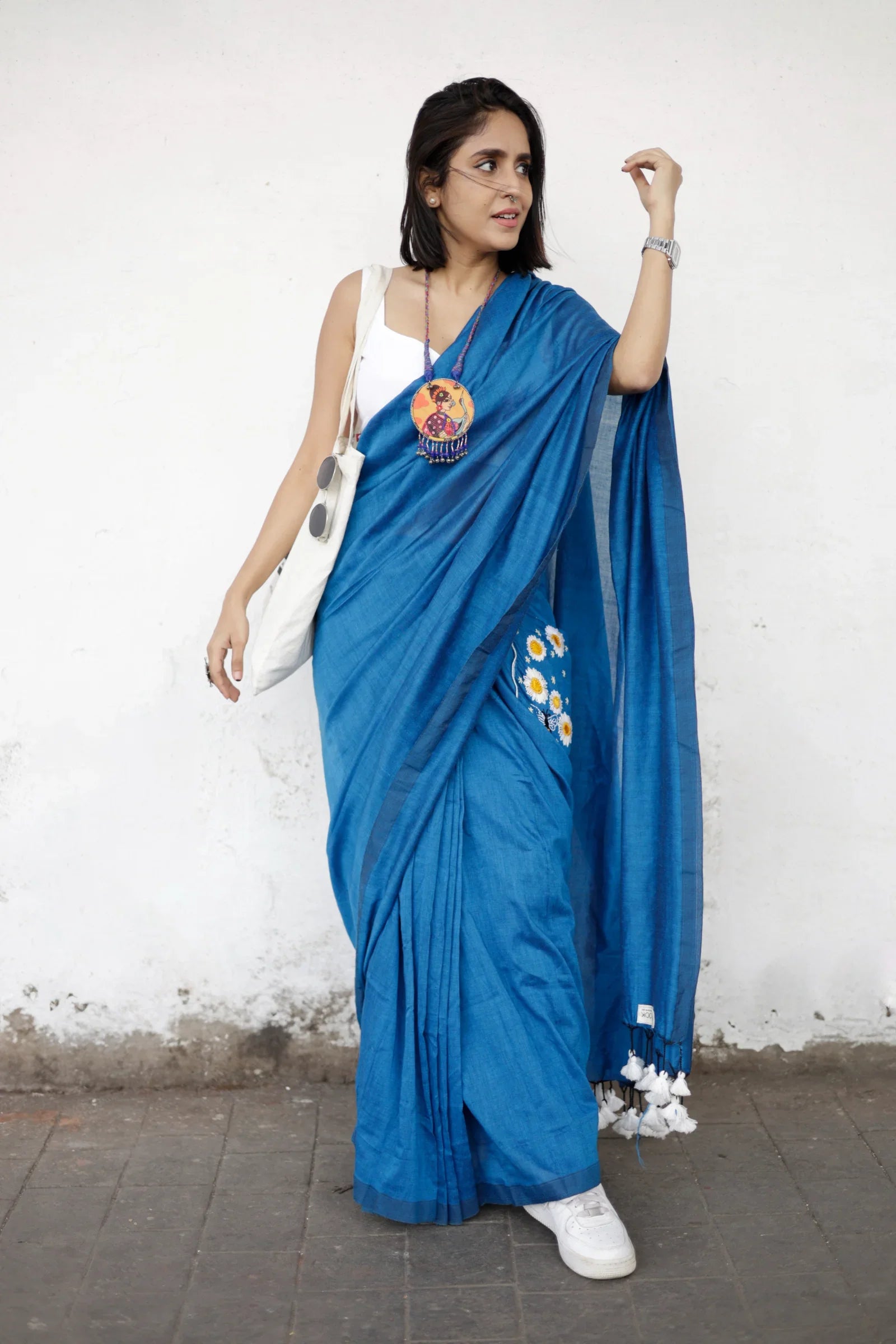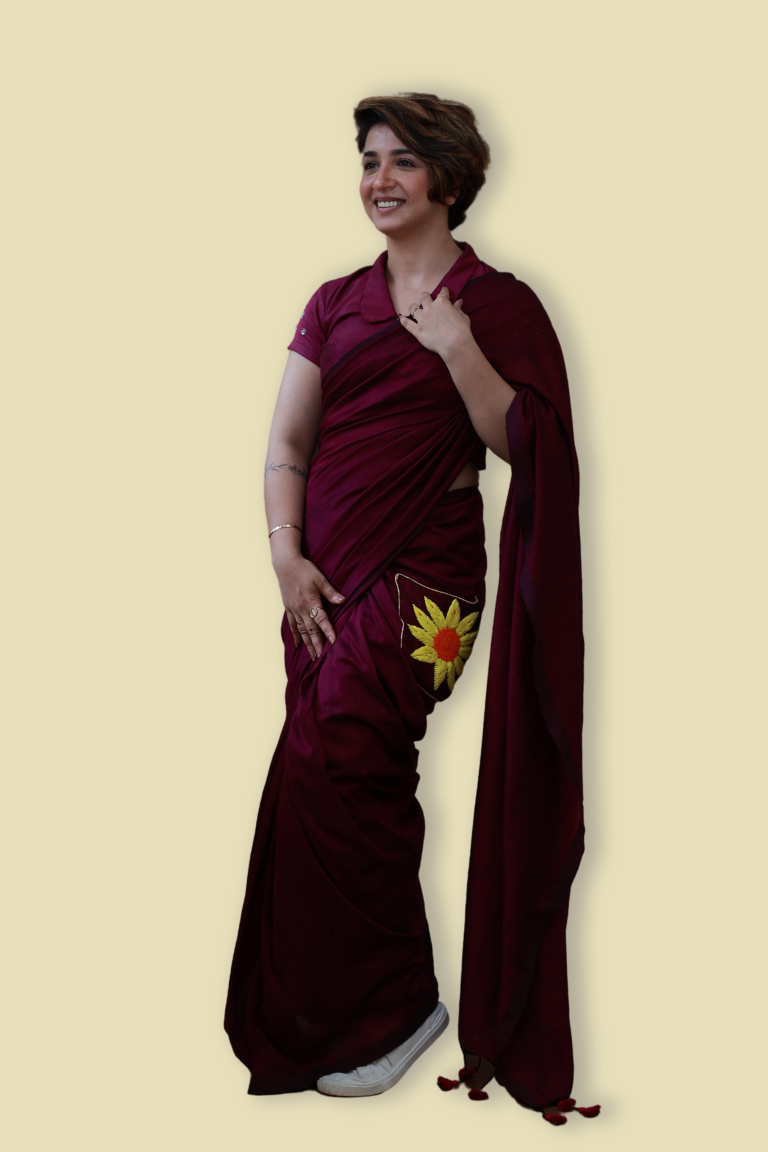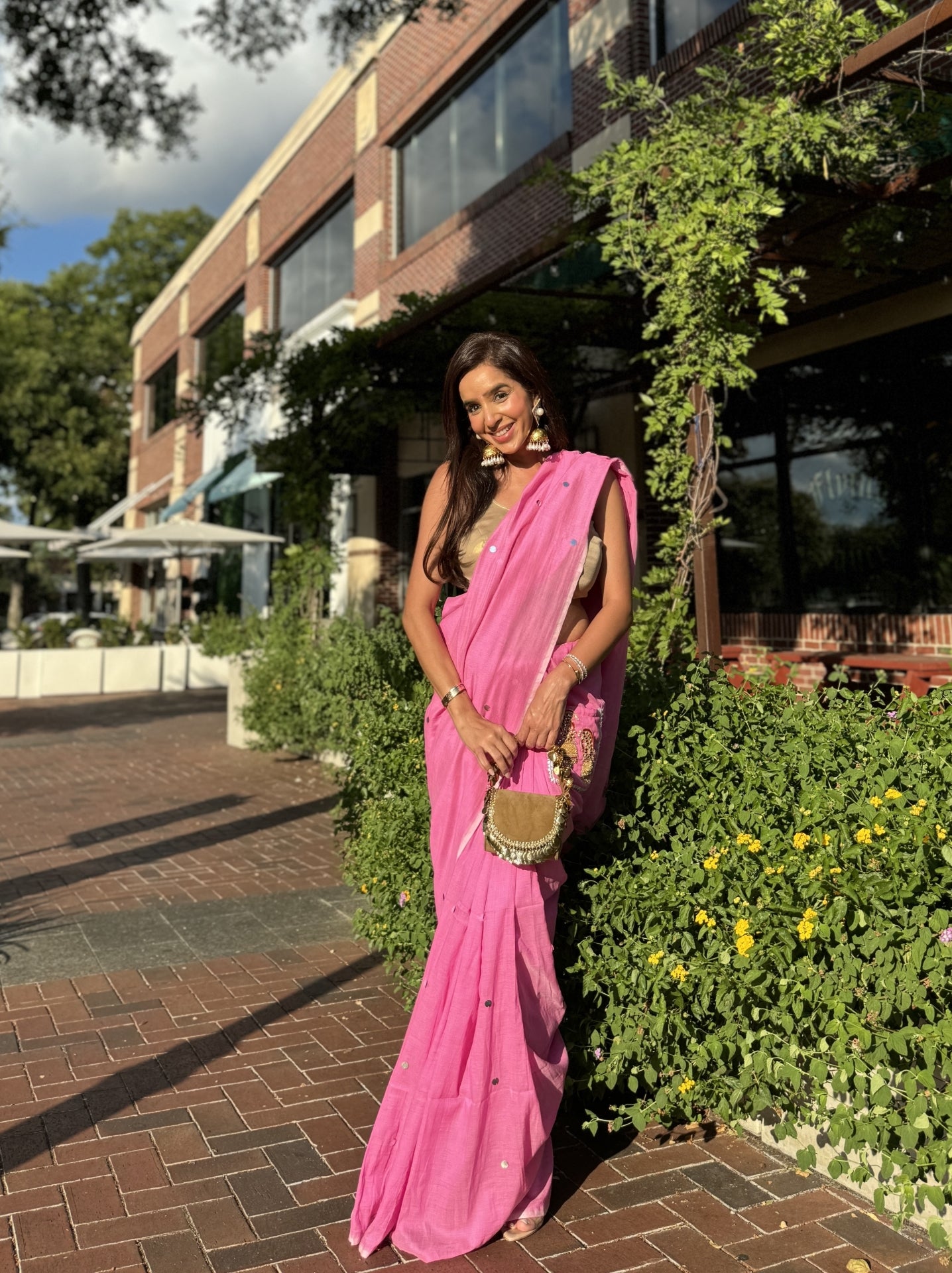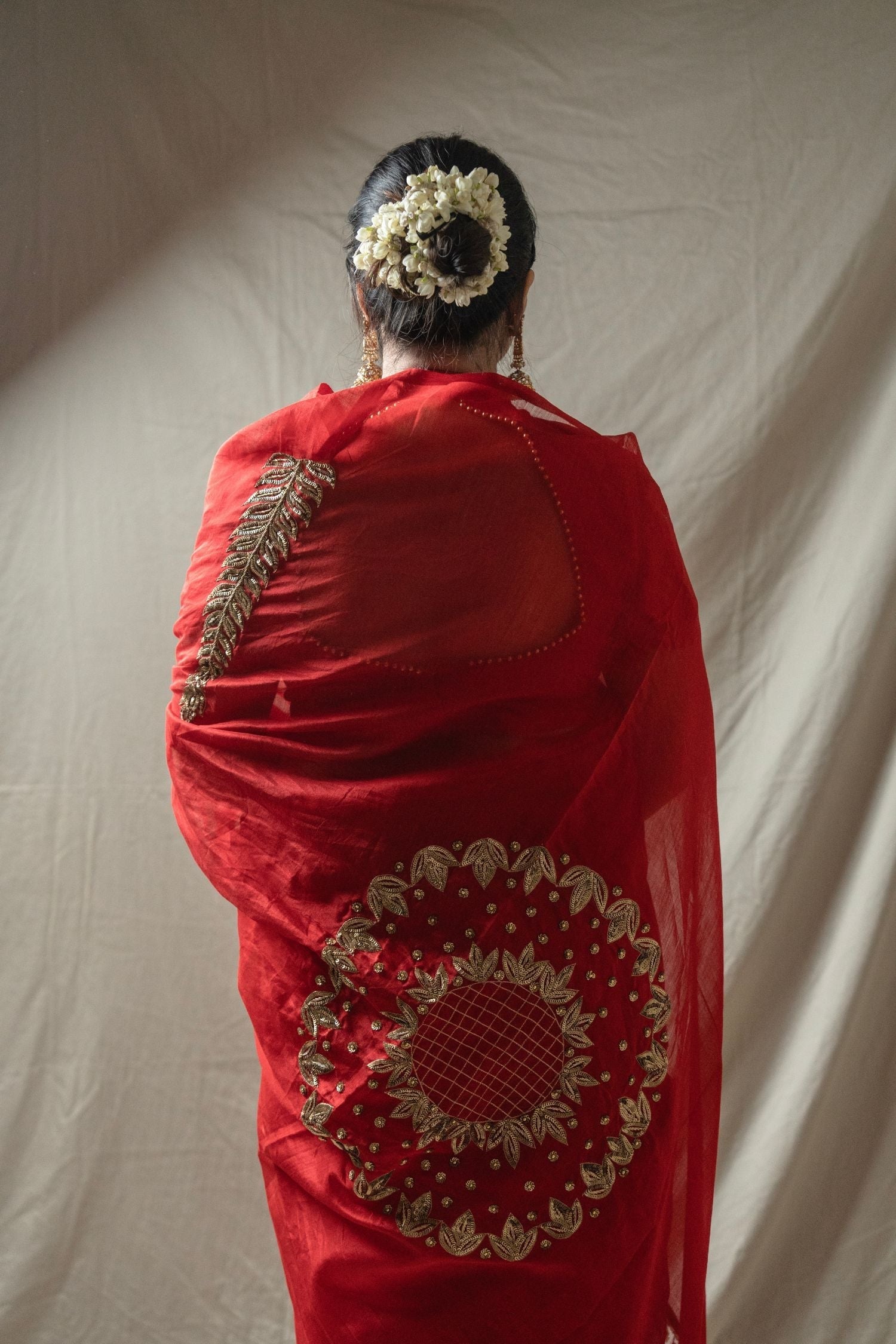The cultural fabric of India is as colourful and diverse as the garments they produce. Across geographic and temporal boundaries and local and regional communities, a saree represents a meaning - of heritage, craft, symbol, and tradition. There are so many unique forms of sarees being produced across this land - from the fine silk strands of Kanchipuram to Bengal's tan with its raw, earthy elegance. Sarees are not merely clothing; they are an artistry that reflects the significance of a particular region.
In this blog, we will reflect on the rich seat of tradition in saree weaving from various states in India and consider the specific techniques, materials, motifs, and cultural expressions in these textile traditions. Whether you are a saree enthusiast, a fashion enthusiast, or curious about India's artisanal heritage, appreciation of saree weaving and the wide variety of regional tradition will further enhance your appreciation of a saree's beauty and craftsmanship behind its drape.
Why Saree Weaving Traditions Matter
Preserving Heritage and Craft
Every weaving tradition holds centuries of knowledge passed from artisans and families. These traditions also represent an experience and aesthetic, and maybe even a viewpoint based in cultural identity that can be preserved by supporting these traditions.
Sustainability and Slow Fashion
Handwoven sarees follow the tenets of sustainable design because they are made with all locally sourced materials, dyed with natural dyes, and made with an awareness to the environment, Handwoven sarees are a form of art that recognizes the skills of artisans and promotes intentional consumption in a world of fast fashion.
Major Saree Weaving Traditions Across India
1. Kanchipuram Silk - Tamil Nadu
Kanchipuram silk sarees are known for its richness, vivid colour, and exquisite avant-garde zari. Kanchipuram, formerly known as Silk City, is the native site of Kanchipuram sarees exemplified as auspicious wear at weddings, festive occasions, etc.
Key Features
-
Pure mulberry silk.
-
Bright contrasting borders, woven separately and interlocked thereafter.
-
Traditional motifs are created: peacocks, temples, checks, etc.
-
Zari is used in both, patterns and borders, and gold.
Cultural Significance
Weavers of Kanchipuram sarees root their craft deeply in Hindu rituals and design choices have been influenced by temples and deities. Kanchipuram sarees are often gifted at marriages and auspicious celebrations as it is deemed auspicious itself.
Example:
A Kanchipuram saree with a dominant deep maroon body, met with gold temple border, encompasses a sense of a South Indian community celebrated as grand, with precise weaving and intensely detailed inside fringed weaving with meticulous artisanship.
2. Banarasi - Uttar Pradesh
Banarasi sarees exemplify luxury and elegance. Woven in Varanasi, they are distinguished by elaborate brocade designs and intricate zari work, which creates beautiful, intricate patterns.
Key Features:
-
Rich silk fabric with metallic threads.
-
Plants, flowers, and foliate designs inspired by the Mughal era.
-
Techniques, such as weaving jari and jamewar fabrics.
-
A soft sheen and drape suitable for bridal wear.
Cultural Importance:
Banarasi sarees have had royal connections, signifying a royal status throughout history and have been worn by nobility and aristocracy for centuries. Banarasi sarees denote celebration, joy, and can be gifted and passed down as heirlooms.
Example:
A crimson Banarasi saree with an elaborate gold buti or design is the quintessential wedding attire, an elegant study of the nasal opulence of Banaras and what it represents in the world of weaving.
3. Chanderi - Madhya Pradesh
Chanderi is known for its lightweight and translucent fabric. Woven in Chanderi, Chanderi sarees are combinations of silk-cotton and can be worn in summer as well as for formal occasions throughout the year.
Key Characteristics:
-
lightweight, translucent nature with soft hand feel.
-
geometric shapes, floral designs and use of gold or silver zari.
-
silk-cotton or pure silk fabric.
Cultural Significance:
Chanderi sarees are synonymous with royalty, elevated elegance and sophistication that most subconsciously interpret as "good taste". For this reason, they have remained popular with urban women looking to wear comfort while appearing well-turned out.
Example:
A pastel-green Chanderi saree with light grey tones and a minimal zari border would work well for daytime occasions without sacrificing elegance for comfort.
4. Paithani - Maharashtra
Paithani sarees originated in the town of Paithan, Maharashtra and have silk traditions based on bright color varieties and depictions on the saree of peacocks or lotuses. Paithani sarees are hand loom silk weaves, which can be traced back to the mid-sized town of Paithan, Maharashtra, but the tradition itself can be traced as far back as the Satavahana dynasty.
The most recognizable characteristics of Paithani sarees include:
-
A rich silk body with contrasting pallu
-
Peacock, Lotus, mango designs
-
For the past 30 years, I have learned to like the brilliant colors of purple, magenta, emerald green, and so on.
Cultural Significance
Traditionally, the Paithani saree is worn during religious events and festivals. Since the Paithani saree is considered sacred we find families keeping the Paithani for many generations.
Example
Below, is a royal purple Paithani saree with loomed golden peacock patterns that shows the local talent and pride in the workmanship.
5. Patola - Gujarat
Patola sarees are intricately woven double ikat textiles that require a great amount of care and skill. There is a dying process through which each thread is dyed prior to the weaving which results in specifically patterned textiles that match, side by side.
Key Features:
-
Double ikat which means the warp and weft threads are dyed.
-
Bright geometric and floral motifs.
-
Hand woven is very tedious and requires less production.
Cultural Significance:
Traditionally, Patola weaving is typically operated on a family level and usually the traditional weaving techniques have been handed down through families. Patola sarees are loved by fashion enthusiasts and for the stunning patterns that each piece has, which may be complex and greatly detailed.
For example:
A predominantly red and yellow diamond patterned Patola saree is an individual artist's bold statement of art and is a captivating example of the color and art of Gujarat.
6. Tant - West Bengal
Bengal's tant sarees are featherweight, airy, and the best fabric choices for humid weather. They are soft and extremely comfortable that is the reason they are frequently preferred for most daily wear and festive events.
Key Features
-
Pure cotton with fine weaving.
-
The border characteristics are red, or contrasting colors with floral or paisley designs.
-
Crisp texture with a soft draping process.
Cultural Significance:
Tant sarees are also known as enigmatic elements in Bengali culture. They are worn during Durga Puja, weddings, and rites of passages. They signify simplicity and elegance as fabrics.
Example:
A common illustration of Bengal weaving heritage is a white tant saree with a red border and floral motifs.
7. Maheshwari - Madhya Pradesh
Maheshwari sarees have become famous for many reasons. One of which is that they are made from super lightweight cotton and silk fabrics with striped patterns. Woven in Maheshwar, India, these sarees are typically made with silk and cotton and serve as both comfortable and stylish attire.
Key Characteristics:
-
Usually made with a blend of silk and cotton.
-
Styled with stripes, checks, and temple borders.
-
Soft finish with a structured drape.
Cultural value
Maheshwari sarees are not just clothes, but a form of dress and celebration.
Sample:
A navy blue Maheshwari saree that has been printed with silver stripes is a modern take on traditional dress, that thrives on comfort.
Supporting Evidence: Research and Artisans’ Insights
Handcrafted Skill
The All India Handloom Board mentions that weaving styles such as Kanchipuram and Banarasi are maintained through community learning. Artisans spend a significant amount of time training or weaving the techniques relevant to their region. Typically, there is also a long period where they are doing both, so they have gained the knowledge and experience.
Economic Considerations
Handloom weaving provides livelihoods for more than 4 million weavers across India. Supporting these labourers allows for local economic development, and encouraging rural entrepreneurship.
Sustainability Trends
Natural dye, environmentally sustainable production and minimization of waste are all trending in the global paradigm of sustainable fashion. Many weaving centres have started partnerships with designers to some extent to help expand the market and reach, while continuing to protect hand woven traditions.
How to Choose the Right Saree for Your Occasion
Fabric Considerations
-
Lightweight fabrics by their nature such as Chanderi and Tant are best for summer events.
-
Heavyweight fabric, which has a rich texture, such as Banarasi and Paithani are ideal for wedding or festival events.
Know your motifs
-
Floral prints certainly have their place for Spring and daytime events.
-
Geometric and temple motifs are best for traditional events
Co-ordinate with the Accessories
-
Heavy zari work will look best with bangles or gold jewelry in a nicely draped look.
-
When you wear subtle weaves, you can keep all your accessories to a minimum for your whole outfit.
Conclusion
The traditional form of saree weaving in India is a lot more than just cloth, it reflects a complex weave of artisan skill, cultural identity and creativity. Every region, from the extravagant Banarasi of Uttar Pradesh to the breathable Tant of Bengal, is representative of a unique story, put into a fabric/warp by the application of silk, cotton and obviously creativity. By choosing sarees of these traditional styles, you relish not only elegance but also assist an artisan in sustaining her livelihood and heritage
Essential points:
-
Saree weaving is a tradition, and a rich legacy that is based in regional identities and practice passed down through generations.
-
States represent different fabric, motifs and methods appropriate for different ceremonial moments.
-
Supporting sarees from handloom and woven products is a sustainable fashion practice and supports interstate artisans’ livelihood by creating demand.
-
Buying and understanding the right saree is dependent on fabric, weight, ultimately pattern and cultural significance based on context.
At kozylook.com, we seek to encourage India's legacy of weaving - we have curated sarees that reflect the beauty and uniqueness of each traditional identity, checkout now and wear meaning while sustaining artisans across the country.
Discover India’s diverse saree weaving heritage - from Kanchipuram silk to Bengal’s tant. Learn about unique techniques, cultural significance, and sustainable fashion practices. Shop artisan-made sarees at kozylook.com.





